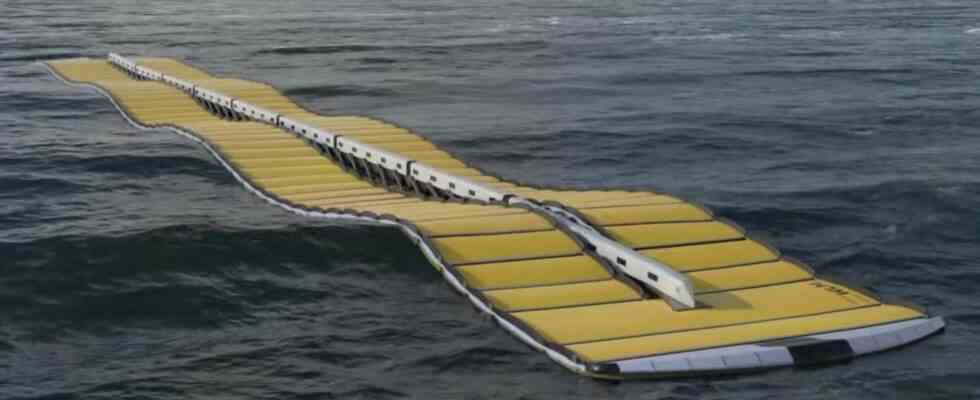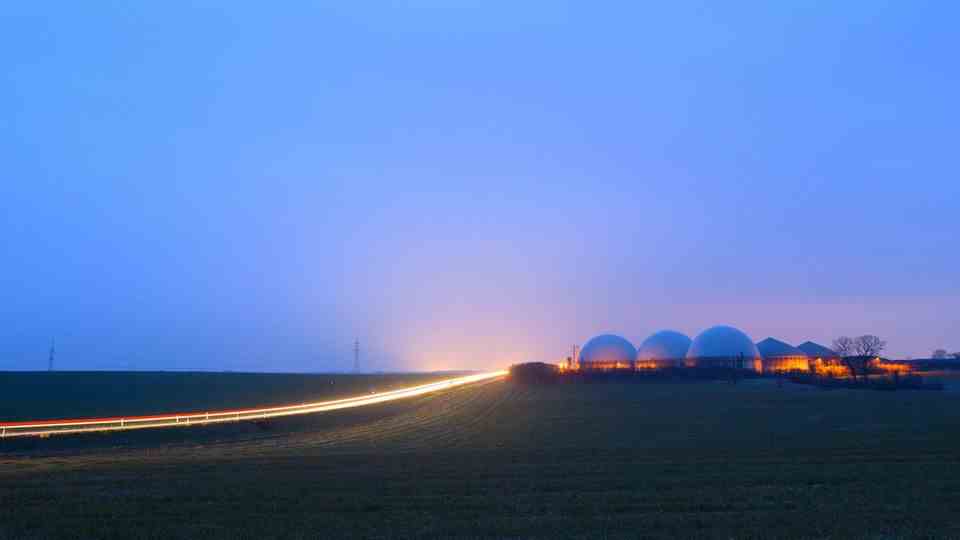Up to 100 megawatts
Floating power plant floats like an air mattress in the sea – and is intended to make fossil fuels superfluous
The power plant is on the water and generates electricity through movement.
© Sea Wave Energy Ltd.
The British company “Sea Wave Energy” wants to turn the sound of the sea into electricity. A kind of floating mat should use the constant waves for this purpose.
The British-Cypriot company “Sea Wave Energy” wants to tap energy where it is generated in the future. To do this, the research team has developed a kind of floating mat called “Waveline Magnet”, which lies on the sea and is intended to use the waves to generate electricity.
The system consists of numerous floating bodies that constantly move up and down through the waves. A rail, which also acts as a generator, is then supposed to convert this energy into electricity. The power plant should either send this to land by cable or use it to produce hydrogen in order to be able to store the energy on site.
100 megawatts, one cent per kilowatt hour
in one corporate video Technical Director Alexandros Zakheos explains that the power plant can produce around 100 megawatts of energy in its largest expansion stage. For comparison: The largest wind turbine in the world, the Vestas V236, produces up to 15 megawatts. In addition, the costs for the electricity from the system should be particularly low. The company speaks of electricity generation costs of “less than one cent per kilowatt hour”.
The price would be just as revolutionary as the performance. Current studies speak, for example, of 11 to 20 cents per kilowatt hour for hard coal, four to eight cents for onshore wind and six to eight cents for small photovoltaic systems.
The production costs for the power plant should also be very low, they say. The reason for this is the material used. Sea Wave Energy says it wants to use plastics and reinforced plastics that don’t require a specialized production line and are inexpensive to manufacture and repair. If that’s necessary at all, because the video proudly states that the “Waveline Magnet” power plant should withstand any swell. So you can look forward to a test in the Bering Sea.
Tests are underway, experts are skeptical
But it will probably be some time before that happens. Before “Sea Wave Energy” starts mass production, they want to carry out further test runs and identify possible problems.
The New Atlas report is skeptical about the numbers and past performance. Because the results of the previous prototypes are very far from the specifications mentioned, calculate the experts. A 32 meter long test object in the wave tank produced a maximum of 1.4 kilowatts – a fraction of the promised 100 megawatts. So the question still arises as to how large “Sea Wave Energy” imagines the final mat to actually achieve the stated values.
source: Sea Wave Energy, NewAtlas




